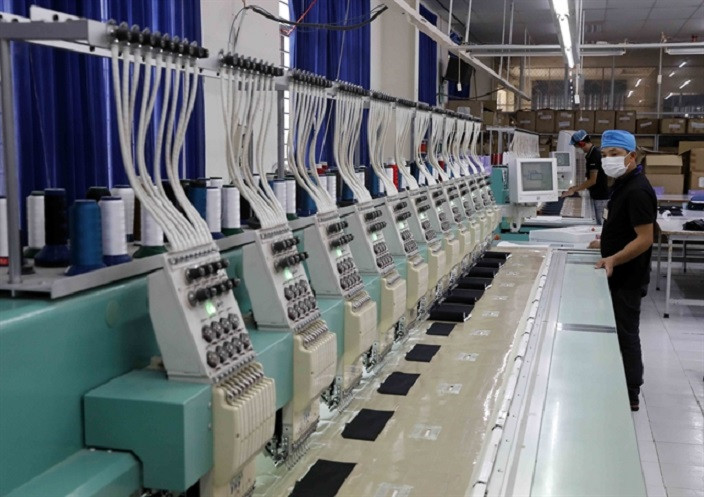While job creation and a declining unemployment rate signal optimism, Vietnam’s labor market continues to face considerable challenges.
Workforce redundancies from state restructuring and global economic volatility are straining employment stability.
More than 100,000 workers gain employment

After years of unemployment, Nguyen Van Vy from Dan Phuong, Hanoi, recently secured a sales position in a construction materials company through a local job fair organized by Hanoi’s Employment Service Center.
Vy noted that unlike unreliable online job ads, the fair provided credible opportunities and direct interaction with employers.
Similarly, Le Thanh Trung from Duong Xa Ward was able to create jobs and increase household income by securing a loan of 70 million VND (approximately 2,750 USD) from the city’s Social Policy Bank to expand pomelo farming. “Without this financial support, investing in large-scale production would be nearly impossible,” Trung said.
These are just two examples of how Hanoi’s proactive employment policies have supported job seekers. In the first five months of 2025, the city helped over 105,000 people secure jobs, achieving 62.3% of its annual plan and nearly 20% more than the same period last year.
Hanoi’s employment programs utilize various channels: social policy credit created jobs for 34,000 people with 1.7 billion VND (approx. 66,700 USD) disbursed; job fairs and employment centers connected 12,900 people to new positions. Additionally, over 56,000 found work through private referrals, social organizations, or start-up initiatives. In May 2025 alone, 17,044 people were placed in jobs.
Hanoi expects to recruit 100,000 to 120,000 workers in the second quarter across key sectors including manufacturing, textiles, leather goods, digital technology, software engineering, cybersecurity, AI design, healthcare, tourism, hospitality, finance, real estate, e-commerce, and logistics.
Vũ Quang Thanh, Deputy Director of Hanoi’s Employment Service Center, emphasized that job opportunities are diverse, but employers’ requirements vary based on experience, skills, and technological knowledge.
“The coming months present abundant options, especially for young workers seeking roles aligned with their qualifications,” he said.
Hidden risks amid positive signs
Despite these improvements, significant risks remain. Labor redundancies from public sector restructuring are expected to affect over 100,000 people. This transition, combined with private-sector layoffs, has led to labor market instability.
Dr. Nguyen Thi Lan Huong, former Director of the Institute of Labor Science and Social Affairs, cautioned that public-sector downsizing at provincial and local levels will cause major disruptions. “Nationally, unemployment has already surpassed one million,” she noted.
However, Huong emphasized that not all those leaving state positions are unemployed - many are transitioning into other sectors. Given their skills and government support, this group could contribute significantly to non-state sectors in the long run.
Thanh advised displaced workers to explore career shifts thoughtfully, research sectors with high labor demand, and continuously upskill - especially in AI and digital technology. For older workers, learning tech basics can improve competitiveness.
“Understanding labor trends and enhancing personal capabilities will help workers integrate more smoothly into the private sector,” he explained.
Huong added that this influx of skilled public-sector workers could benefit the national economy. “They bring discipline, process knowledge, and systemic thinking,” she said. However, adapting to private-sector performance metrics and time pressures will require adjustments. Workers must improve communication and teamwork, embrace change, and be open to new working methods and diverse environments.
To meet these challenges, Hanoi plans to strengthen labor market forecasting, expand vocational training and re-skilling, and boost job fair activities. The city will enhance its employment service centers and help employers and job seekers connect more effectively. It also aims to expand access to preferential loans for self-employment and support local small-scale businesses, thereby improving job creation and labor market stability.
PV